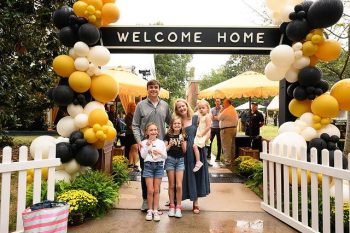Leavening legend. Tailgate treasure. What would any pregame party be without Deacon Crunch cookies, mouth-watering morsels chock-full of oatmeal, corn flakes, and chocolate chips created by hostess extraordinaire Marybeth Sutton Wallace (’86)? Does anyone doubt she’s the Martha Stewart of Wake Forest?
Around Hearn Plaza have you noticed those forest-green bistro tables and chairs? How about the Ping-Pong tables outside the Deacon Shop? 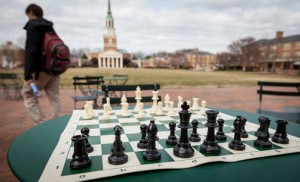 Two black-and-gold carts on either side of the Quad would be suitable for a flower vendor on the Champs-Élysées, but here they contain Scrabble, yoga mats and kettle bells. Dan Biederman, the global expert on vibrant public spaces who transformed Bryant Park in New York City, and his team have been helping our community add the Quad amenities and envision others for our campus spaces. The Quad is not just for Frisbees anymore.
Two black-and-gold carts on either side of the Quad would be suitable for a flower vendor on the Champs-Élysées, but here they contain Scrabble, yoga mats and kettle bells. Dan Biederman, the global expert on vibrant public spaces who transformed Bryant Park in New York City, and his team have been helping our community add the Quad amenities and envision others for our campus spaces. The Quad is not just for Frisbees anymore.
Commencement has its array of whoops of delight and comical signs, but every year a singular, poignant moment causes grown-ups to cry, at least a tear or two. It happens when the ROTC cadets take their oath of commissioning, swearing to uphold and defend the Constitution. The end of the oath is the very instant the cadets become officers, the newest second lieutenants in the U.S. Army. The goal at Wake Forest is to commission 14 officers a year, who depart campus for up to six months of specialty training and then land anywhere in the world, from Europe to Asia and points afar. In 2004 the Commencement speaker administered the oath. It was U.S. Secretary of State Colin L. Powell.
Call them faculty, professors, mentors or friends, Wake Forest teachers are respected for their academic expertise and a remarkable ability to inspire and nurture students.
Think of time spent with Wilson, Moorhouse, Brée, Dodding and Smiley. Or Phillips, Barefield, Harriger, Weigl, Smith, Eure, Boyle and Schoonmaker, among others. What unforgettable life lessons did you learn from those who brought the “higher” to higher education?
 THE LIBERAL ARTS: ALIVE AND KICKING
THE LIBERAL ARTS: ALIVE AND KICKING
You can’t swing a seven-iron on the professional golf circuit without hitting a Deacon. Since Arnold Palmer (’51, LL.D. ’70) teed it up on the Paschal Golf Course near the Old Campus, Wake Forest has been known for its golf tradition: Lanny Wadkins (’72, P ’96, ’10), Curtis Strange (’77), Jay Haas (’76, P ’04, ’10), Brenda Corrie-Kuehn (’86), Billy Andrade (’87), Stephanie Neill-Harner (’95), Laura Philo-Diaz (’97), Bill Haas (’04), Webb Simpson (’08) and Cheyenne Woods (’12), just to mention a few of those who’ve starred on the links.
Alumni who have served in the Peace Corps say the experience is less about how they changed lives than how lives changed them. The University’s mission of making the world a better place through service aligns perfectly with that of the Peace Corps. 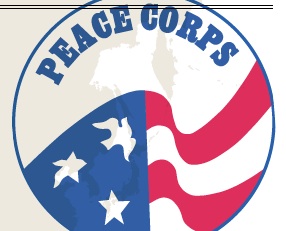 Wake Forest has ranked among the nation’s Top 25 schools to produce volunteers — over 200 in the last 50 years. Arthur Orr (’86) found joy teaching children in Nepal; Jane O’Sullivan McDonald (’89) started a girls’ club in Togo, West Africa, and learned to better understand the difference between “want” and “need.” Charles “Chic” Dambach (MBA ’77), who served in Cartagena on the Caribbean coast, said, “Bigger cars and TV sets became irrelevant; deeper friendships and time to enjoy them became a priority. I gained tremendous respect and appreciation for the people who are born with nothing of material worth but enormous human spirit and resilience.”
Wake Forest has ranked among the nation’s Top 25 schools to produce volunteers — over 200 in the last 50 years. Arthur Orr (’86) found joy teaching children in Nepal; Jane O’Sullivan McDonald (’89) started a girls’ club in Togo, West Africa, and learned to better understand the difference between “want” and “need.” Charles “Chic” Dambach (MBA ’77), who served in Cartagena on the Caribbean coast, said, “Bigger cars and TV sets became irrelevant; deeper friendships and time to enjoy them became a priority. I gained tremendous respect and appreciation for the people who are born with nothing of material worth but enormous human spirit and resilience.”
Do you hear the people sing?
If so, you’re probably listening to one of five stellar a cappella groups on campus. The all-female Minor Variation and all-male Chi Rho, both Christian groups, have been featured on the annual a cappella compilation CD “Voices Only,” which brings together some of the country’s best a cappella voices. Plead the Fifth, Demon Divas and Innuendo are also well-known. Four of the groups have albums on iTunes, and a few claim their own set of groupies. (Wake men who can sing attract quite the following.)
 FRIENDS FOREVER
FRIENDS FOREVER
(aka ‘If you’re ever in a jam, here I am.’)
Whether you met in a dorm, a class or at a party, the good friends you made at Wake Forest likely became pals for life. (Think Byrd and Betty, still going strong as BFFs since 1950, when they said, “Hello, Roommate!”) When other friendships have been forgot, Deacon friendships will still be hot!
“Meet me on the Quad at midnight.”
– Skip Prosser
Thank goodness some traditions don’t last, or we’d be yelling “Go Tigers!” In 1895, John M. Heck designed the first “college badge:” a tiger head over the letters WFC, according to an article in The Wake Forest Student magazine that year. The colors were old gold and black. While the colors have lasted, the tiger quickly died as the nicknames “Baptists” and “The Old Gold and Black” became popular.  The tiger resurfaced 100 years later on the Old Campus on what was once the “playing grounds” for athletic contests. Before construction began at that site in 2009 for the Wake Forest Historical Museum, volunteer Doug Snyder used a metal detector to scour the area, uncovering old coins, metal fragments, buttons and other items from Wake Forest days gone by. Among the remnants was a small, oval pin bearing the image of a tiger, Wake Forest’s first, but short-lived, mascot.
The tiger resurfaced 100 years later on the Old Campus on what was once the “playing grounds” for athletic contests. Before construction began at that site in 2009 for the Wake Forest Historical Museum, volunteer Doug Snyder used a metal detector to scour the area, uncovering old coins, metal fragments, buttons and other items from Wake Forest days gone by. Among the remnants was a small, oval pin bearing the image of a tiger, Wake Forest’s first, but short-lived, mascot.
 RED (research, exploration, discovery)
RED (research, exploration, discovery)
Verbal Victor app for people with communication disabilities.  Targeted therapy for a “Trojan Horse” sneak attack on breast cancer. Advancing vehicle safety. Reducing head injuries in football. Power Felt for converting body heat into an electric charge. “Digital ants” on the hunt for computer viruses. Human organs growing in the lab. A new model for crowdsourcing predictions. Beet juice for brain health. Flicker-free, large-scale lighting. Next-generation genetic sequencing for drug development. Fruit fly brains as the means to explore hormone signaling. Onward.
Targeted therapy for a “Trojan Horse” sneak attack on breast cancer. Advancing vehicle safety. Reducing head injuries in football. Power Felt for converting body heat into an electric charge. “Digital ants” on the hunt for computer viruses. Human organs growing in the lab. A new model for crowdsourcing predictions. Beet juice for brain health. Flicker-free, large-scale lighting. Next-generation genetic sequencing for drug development. Fruit fly brains as the means to explore hormone signaling. Onward.
When the N.C. Legislature approved a bill in 1838 changing the name of Wake Forest Institute to Wake Forest College, it included a provision prohibiting any “theatrical, sleight-of-hand or equestrian performance … rope or wire dancing” within one mile of the College. But that didn’t stop the show. The Wake Forest University Theatre got its start in 1942, presenting plays at Wake Forest High School. Ever since, budding thespians have brought comedies, musicals, dramas and the occasional passion play to the stage. On the new campus, the theatre program grew despite its makeshift, temporary quarters on the 8th floor of the Z. Smith Reynolds Library (“our little magic shop,” retired professor Harold Tedford (P ’85, ’91) still calls it). When the Scales Fine Arts Center opened in 1976, theatre had a new home. Venerable professors Tedford, Don Wolfe and Jim Dodding played starring roles in building a lively campus theatre scene that continues to entertain, challenge and inspire us, and for some, provides the opening act of careers in LA and New York City.
Do you remember being nervous to dive right into college? Luckily, Wake Forest has its students’ backs with a variety of pre-orientation programs offered before the official freshman orientation begins. Before the chaos of move-in, students can meet fellow first-years through wilderness excursions, community service projects, crash courses in Wake Forest history, a spiritual retreat and even a weeklong stay in Vienna, Austria. What a way to make friends before you even settle into your dorm room!
You only need two words to describe one of the greatest moments in Deacon sports history: Randolph Childress’ jumper in overtime against North Carolina in the 1995 ACC Championship game that won Wake Forest’s first conference championship since 1962.
“When a man is tired of London, he is tired of life; for there is in London all that life can afford,” the 18th-century British writer Samuel Johnson once said. For 36 years, students have fully embraced life in London from 36 Steele’s Road in suburban Hampstead. 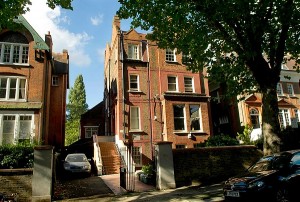 A semester at Worrell House has created more than 1,000 Anglophiles, formerly known as Wake Forest students, who eagerly explored Westminster Abbey, the Tate Gallery, the Globe Theatre, Kenwood House, Hampstead Heath, Primrose Hill and the Sir Richard Steele pub. The house — purchased through a gift from the late Gene Worrell (’40, L.H.D. ’79) and his wife, Anne — was officially dedicated on that most American of holidays, July 4, 1977, with Winston Churchill’s daughter, Sarah, unveiling a bust of her father in the Churchill Room. With more than a handful of students finding romance (and eventually marriage) as part of its allure, Worrell House is a noble place to fall in love with life.
A semester at Worrell House has created more than 1,000 Anglophiles, formerly known as Wake Forest students, who eagerly explored Westminster Abbey, the Tate Gallery, the Globe Theatre, Kenwood House, Hampstead Heath, Primrose Hill and the Sir Richard Steele pub. The house — purchased through a gift from the late Gene Worrell (’40, L.H.D. ’79) and his wife, Anne — was officially dedicated on that most American of holidays, July 4, 1977, with Winston Churchill’s daughter, Sarah, unveiling a bust of her father in the Churchill Room. With more than a handful of students finding romance (and eventually marriage) as part of its allure, Worrell House is a noble place to fall in love with life.
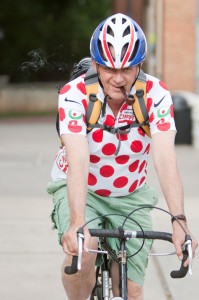 We admire those professors who are not only great teachers but great characters, too, with endearing personalities and idiosyncrasies. The late history professor David Smiley (P ’74), who claimed to be from heaven by way of Mississippi, roamed around campus picking up trash and turning off lights in empty classrooms. The late trailblazing, cigarette-puffing, feisty English professor Elizabeth Phillips inspired generations of Wake Forest women, and men, too, to enjoy poetry. Longtime history professor Jim Barefield, with his wry sense of humor and love of Pepperidge Farm cookies, taught us to see comedy in tragedy. And pipe-smoking, banjo-picking Russian professor Billy Hamilton (P ’93, ’97) never met a pun he didn’t like.
We admire those professors who are not only great teachers but great characters, too, with endearing personalities and idiosyncrasies. The late history professor David Smiley (P ’74), who claimed to be from heaven by way of Mississippi, roamed around campus picking up trash and turning off lights in empty classrooms. The late trailblazing, cigarette-puffing, feisty English professor Elizabeth Phillips inspired generations of Wake Forest women, and men, too, to enjoy poetry. Longtime history professor Jim Barefield, with his wry sense of humor and love of Pepperidge Farm cookies, taught us to see comedy in tragedy. And pipe-smoking, banjo-picking Russian professor Billy Hamilton (P ’93, ’97) never met a pun he didn’t like.
FAMILY TIES
Legacy alumni claim a distinctive brand of Deacon pride when sons or daughters choose to follow parents’ footsteps and make Mother, so dear their own.
Who is this “little guy?” the 1948 Howler asked of the campus’ renowned personality, the Demon Deacon.  The Old Gold and Black coined the term “Demon Deacon” in 1923, and Jack Baldwin (’43, P ’70) became the first Deacon 20 years later, dressing up in top hat and tails. But the “little guy” is more than a mascot, as the 1948 Howler explained: “He’s the little guy who made you feel at home among the magnolias scattered over the beautiful campus; he introduced you to professors whom you learned to love and classmates through whom you gained a new sense of brotherhood … He revealed to you all the sacred traditions that the college cherishes; he took special care to cultivate in you a spirit of friendliness … He is the living spirit of Wake Forest College that has enabled it to serve effectively for one hundred and fourteen years in accordance with its motto — Pro Humanitate.” The Demon Deacon may ride a Harley today, but that vintage ’48 description still rings true. We’re all Demon Deacons.
The Old Gold and Black coined the term “Demon Deacon” in 1923, and Jack Baldwin (’43, P ’70) became the first Deacon 20 years later, dressing up in top hat and tails. But the “little guy” is more than a mascot, as the 1948 Howler explained: “He’s the little guy who made you feel at home among the magnolias scattered over the beautiful campus; he introduced you to professors whom you learned to love and classmates through whom you gained a new sense of brotherhood … He revealed to you all the sacred traditions that the college cherishes; he took special care to cultivate in you a spirit of friendliness … He is the living spirit of Wake Forest College that has enabled it to serve effectively for one hundred and fourteen years in accordance with its motto — Pro Humanitate.” The Demon Deacon may ride a Harley today, but that vintage ’48 description still rings true. We’re all Demon Deacons.
 TOM PHILLIPS AND HIS
TOM PHILLIPS AND HIS
AMAZING, TECHNICOLOR OFFICE
Step from the Quad into Reynolda Hall, turn right and behold the office of Tom Phillips (’74, MA ’78), a professor who wears many hats and is famed for nurturing students’ success on the path to Rhodes, Luce, Truman and Fulbright fellowships, to name a few. Behold the incubator — the Wake Forest Scholars office in which Phillips tips all his hats to the late architect Sir John Soane, whose small museum in London is one of the world’s strangest with its 5,888 antiquities, 7,783 books and dozens of “curiosities” including mummified cats.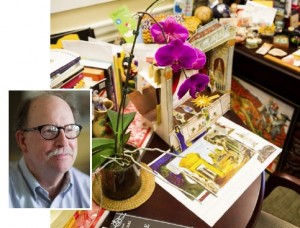
Who knows how many curiosities exist in Phillips’ office? In homage to Soane and as autobiography, it teems with ephemera, obscura and plastic arachnids.
Here’s how the much-loved Phillips describes his roost: “In the manner and spirit of many a pretentious collector (or hoarder?), I have accrued an office that includes gifts from students (from around the world, over the past four decades); mementos of my family and friends; books read and to be read, especially criticism; stubs from plays and concerts far and near; dozens of fake spiders (they hop, they sing, they crawl, they wiggle) courtesy of my spouse, as a joke directed towards my permanent arachnophobia; awards that mean much to me (including the T O Phillips bobblehead for chairing WordsAwake!); and even a standing desk, which gets used when I actually work.” Phillips says he arrives at the office, entering “my own museum, living and warm, that reminds me of my fortune in knowing and working with so many wonderful young people (and not a few older ones as well).” We can’t say whether mummified cats lurk under a pile somewhere, but we do know Phillips could charge admission.
Generations of Wake Forest men — no women allowed — hung out at Shorty’s in downtown Wake Forest. It even attracted TV’s Archie Bunker, Carroll O’Connor, who was briefly a student in the early 1940s. O’Connor recalled spending too much time in Shorty’s, and not enough time studying, as one of the reasons he had to leave Wake Forest: “I was seen far less on campus than in Shorty Joyner’s pool hall … (I) became a truly dangerous nine-ball player,” he wrote in declining a student’s invitation to speak on campus in 1972. 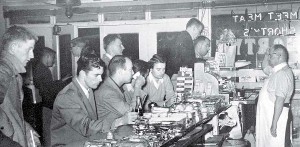 Shorty’s was one of the few restaurants to survive the College’s move to Winston-Salem, and it still attracts visiting alumni who stop by for a hot dog or hamburger and a bit of nostalgia. The 1997 opening of a new Shorty’s in the Benson Center introduced the old hangout to a new generation. Photographs from the original Shorty’s and memorabilia from the Old Campus pay tribute to the past. And you might just find a picture of yourself on one of the tables that feature photos dating to the 1950s.
Shorty’s was one of the few restaurants to survive the College’s move to Winston-Salem, and it still attracts visiting alumni who stop by for a hot dog or hamburger and a bit of nostalgia. The 1997 opening of a new Shorty’s in the Benson Center introduced the old hangout to a new generation. Photographs from the original Shorty’s and memorabilia from the Old Campus pay tribute to the past. And you might just find a picture of yourself on one of the tables that feature photos dating to the 1950s.
At Wake Forest, a mentor isn’t just a professor who is willing to write recommendation letters. A mentor is a teacher, staff member, student or alum who is willing to forge a relationship — based on growth, experience and compassion — that lasts past a single class or semester. The Mentoring Resource Center connects students with mentors who impart wisdom and advice, career-based or other, which students can then carry with them throughout college and their future career. Such mentorships are strong enough to endure after the graduation ceremony ends and a new life stage begins.
When our Wake Forest community unites in song and lifts 2,000 handmade beeswax candles toward the ceiling, Wait Chapel never looks more beautiful than on this night.
We love campus wildlife. No, not that kind. The kind that perches in the trees, swoops down from the sky, scurries through the ivy and unexpectedly pops out of trash cans holding a limp french fry. Hawks, birds, chipmunks, squirrels, geese and the occasional deer put the forest in Wake Forest!
Samuel Wait, a Baptist minister and educator born in New York, worked in the fields with his students when the Wake Forest Institute opened in 1834.
WAAAAAKKKEE! FOOOORREST!
WAAAAAKKKEE! FOOOORREST!
WAAAAAKKKEE! FOOOORREST!
Thanks also to contributors Katie Mahone (’13), Clare Rizer (’13) and those of you who answered our call for ideas on Facebook.
Did we leave out one of your favorites?
Email us or join the conversation on Facebook.




























